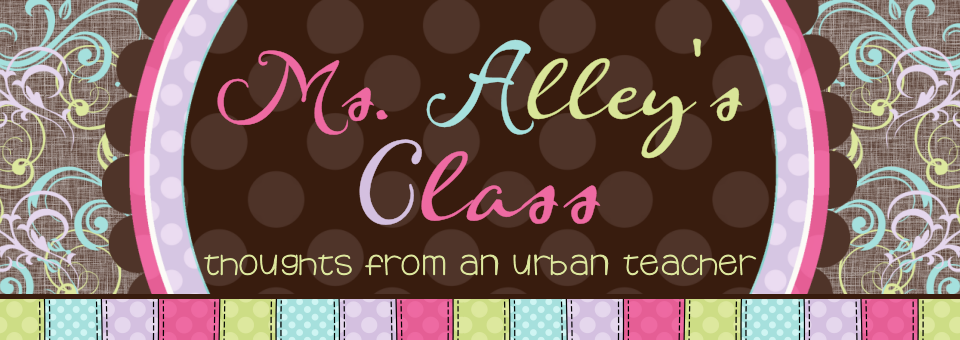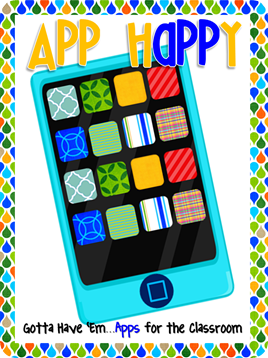I just finished reading this book - and I have to say it is a must read! It does such a great job breaking down the difference between "school mathematics" and "mathematizing." At the end of the day we want our students to understand math in the context of the real world (If we have 862 books in our classroom library how could we organize them into bins?) rather than be able to solve a problem for a test (862/20=?).
My favorite chapter of this book was "Chapter 6: Addition and Subtraction Facts on the Horizon." I don't know about you, but every year I am frustrated by how few of my students really know their addition facts 1-20 by heart. After reading this chapter, I feel like the problem is not that my students come from homes that don't help with their homework or that education is way undervalued, but because I have put too much of an emphasis on memorization rather than understanding the relationship between numbers as well as the relationship between addition and subtraction.
Some common addition strategies are:
1. Doubles plus or minus -- 5 + 6 = 5 + 5 + 1
2. Working with the structure of 5 -- 6 + 7 = 5 + 1 + 5 + 2 = 10 + 3 = 13
3. Making tens -- 9 + 7 = 10 + 6 = 16
4. Using Compensation -- 7 + 9 = 8 + 8 = 16
5. Using known facts -- 3 + 2 = 5, so 4 + 2 must be 5 +1 = 6
So - how do we get our kids to use these strategies with automaticity (rather than relying on their fingers or a number grid)???
Based on Chapter 6 and Chapter 8: Developing Efficient Computation with Minilessons, Fosnot suggests that we give our students opportunities to try out these strategies everyday -- through number sense routines like the rekenrek -- or during mini-lessons that are "designed specifically to highlight certain strategies and to develop efficient mental math computation," all while embedding everything in an open-ended, real-life context. Whew!
The strategies Fosnot suggests we develop during minilessons are:
1. Doubles and Near Doubles with Addition: Use 5 + 5 to solve 5 + 6
2. Splitting: 27 + 42 might be solved by adding 20 + 40 and 7 + 2 and then 60 + 9
3. Making Jumps of Ten: 27 + 42 = 42 + 10 + 10 + 7
4. Moving to the Next "Friendly" Number: 48 + 37 - we want our students to notice how close 48 is to 50 and make the problem 50 + 35.
5. Swapping: 293 + 919 = 213 + 999 (as long as the digits represent the same place value swapping them can make for an easier mental math problem). 213 + 999 = 212 + 1000 = 1212
6. Adding vs. Removing: This is where we want our students to see the relationship between addition and subtraction. When the numbers are close together it is easier to add on, but when they are far apart, it is easier to work backward. For example, 44-3 (easier to count backward), whereas 44-27 (easier to count up.
7. Doubles and Near Doubles with Subtraction: 42-20 = 40 - 20 + 2
8. Making Jumps of Ten Backward: 150 - 39 = 150 - 10 -10 -10 -9
9. Moving to the Next Friendly Ten: 153-34 - solve it by going back to 150, then back 30 to 120 then back one to 119.
10. Constant Difference: This is sort of like the compensation strategy for addition, but since compensation doesn't work for subtraction, we have to do constant difference. 39-21 = 40 - 22
11. Canceling out Common Amounts: This one is great for larger numbers! 107,005 - 100,002...100,000 can be cancelled out - so the problem turns into 7,005 - 2. Much easier!
I also loved the chapter on assessment. If you use Everyday Math, then maybe you have felt some of the same frustrations as me. As much as I like a lot of the program, the end of unit assessments always seem so random. We could have just spent a week on fractions and on the test students are expected to have function machines mastered - or something equally as random. The unit grades always feel a bit arbitrary. My feelings were definitely affirmed. A big theme of this chapter is that skills do not equal thinking, skills do not equal strategies, and concepts do not equal big ideas. Fosnot encourages us to use assessments that are open enough for children to solve them in a variety of ways. "If we want to assess levels of mathematizing, then we need to open the tasks up and look at the way in which the answer to the question is found, not just whether the answer is found."


These pictures are supposed to be stacked on each other and are what Fosnot refers to as the "Landscape of Learning." I wish the font was bigger - thats as close as I could get with my phone. She says, "The landscape of learning (which is comprised of strategies, big ideas, and models) informs the rubric used to analyze it (a problem/assessment) but it in turn also informs how it is taught." She went on to say that when we give open ended assessments many children's answers may be the same or just slightly different, but the key is that each child's position on the landscape of learning will be very varied. For example if the problem is 72 + 38 - one student may solve the problem correctly using tallies and counting by 1s, while another may use splitting by adding 70 + 30 and 2 + 8 and then 100 + 10. Clearly the second child has a much stronger sense of numbers because he used a more efficient and sophisticated strategy.
After reading this book, I now plan to run my math workshop like this:
10 min. warm-up with math routines (see posts on those
here)
15 min. mini-lesson (from Everyday Math, but using a more open-ended, contextual approach)
15 min. independent investigation (I will conference with students - I am hoping about 3 a day)
10 min. "Math Congress" where we share out strategies and keep learning from each other
20 min. work stations (Debbie Diller style) while I meet with my Tier 3 group
That is a total of 70 minutes of math. I don't know that I have 70 minutes for math in my day, but hopefully this will work! I will have to be very conscious of time!
Last, but not least, I have a favor to ask. I made some posters to go with the addition strategies Fosnot talks about. There are 9 total and I want to put them on my TPT store, but I'd love if someone else looked at them first. They make sense to me, but I want to know they make sense to other people as well. If you would be willing to look them over, of course you can have them for free!






































































































